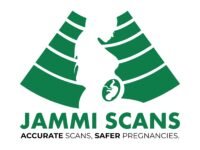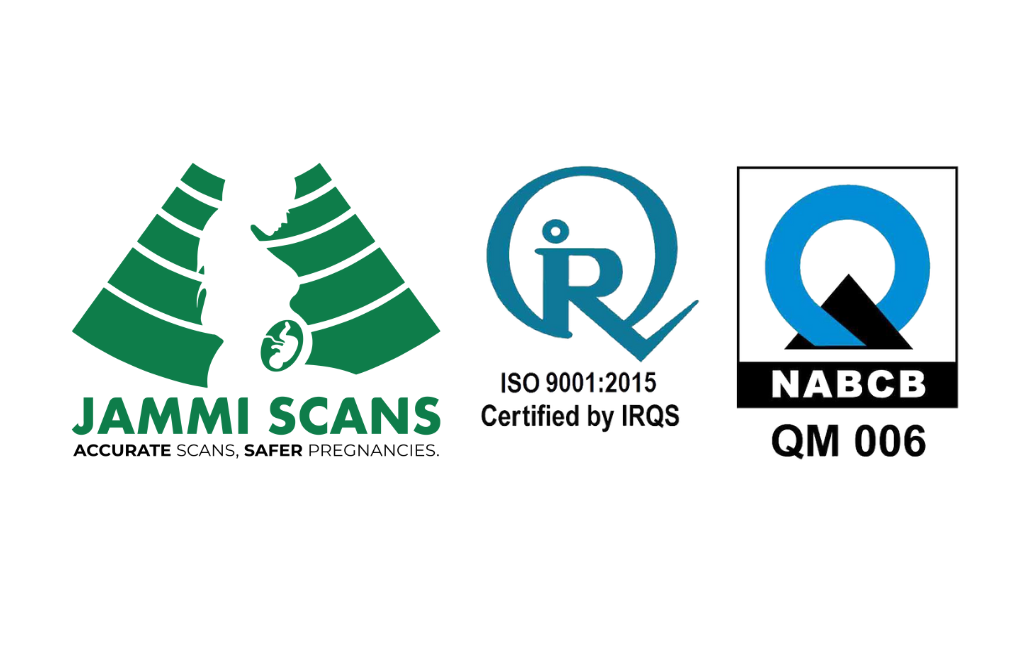Are you excited about having your growth scan? All expectant parents would do this because this stage is when your baby is almost big enough to be visible as a little human. Most healthcare professionals allow your partner or family member to hop into the scan monitor to see your little one during your third-trimester scan.
While you are excited, we also want you to get well-informed about what you can find in a growth scan report.
Watch the video below where Dr. Deepthi (Fetal Medicine Expert and Founder of Jammi Scans) explains how you can read the values in a growth scan report chart.
Table of Contents
ToggleWhat is in Your Growth Scan Report?
CRL:
Crown-rump length (CRL) is an ultrasound measurement studied from the 6th week to the third month of your gestation.
The baby is measured from the top of the head to the bottom of its bump (the largest dimension of the fetus) by excluding the limb and yolk sac in this reading. A decreased CRL can also detect the possibility of chromosomal abnormalities or a growth restriction in your baby.
The first-trimester CRL measurement must be made error-free to avoid the impact on the assessment of growth scan around 20 weeks of gestation.
Along with this, it is to be noted when the CRL measurement exceeds 7mm, your baby is expected to show signs of cardiac activities. If this is missing, you will likely have a missed miscarriage.
|


BDP:
Biparietal diameter (BDP) is one of the fetal biometry measurements done during an ultrasound scan.
Parietal bone is the cranial bone that forms the side and top of the head. Every human has two parietal bones, one on the left and the other on the right. BPD measures the diameter of your baby’s skull, from one parietal bone to the other.
If your baby’s BPD is smaller than normal, it indicates a growth-restricted baby or your baby has a flattened head. If your baby’s BPD is higher than the normal range, it indicates a bigger baby or a health issue, such as gestational diabetes.
The following table shows an approximate value of your BPD measurement from 14 weeks of your gestation to your 32-week growth scan report until you reach term.
HC: Head Circumference (HC) measures your baby’s head around its largest area.
HC is an important measurement in your growth chart report to estimate your baby’s weight and in case of abnormal head size.
In most cases, an error in the HC measurement is caused by advanced gestational age, low liquor, the anterior location of the placenta, and instrumental vaginal delivery.
The following table shows an approximate value of your HC measurement from 16 weeks of your gestation to your 32-week growth scan report until you reach term.
BPD Measurement (mm)
29.4
29.4
78.4
91.5
95.6
Gestational Weeks
14
20
30
37
40
AC:
Abdominal circumference (AC) in a growth scan report shows the length measurement going around your baby’s belly or abdomen.
AC measurement plays a vital role in gauging the baby’s weight rather than the age and cannot be accurately measured as BPD and FL_Rt.
This is a very important measurement in gauging your baby’s development inside the womb, as this part of the body contains the liver, kidneys, and other vital organs needed for the proper development of a healthy fetus.
The following table shows an approximate value of your AC measurement from 16 weeks of your gestation to your 32-week growth scan report until you reach term.
AC Measurement (in mm)
99.1
149.1
260.2
326.1
351.3
Gestational Weeks
16
20
30
37
40
FL_Rt:
Femur Length (FL_Rt) measures the length of the longest bone in your baby’s body, the thigh bone (femur bone).
The measurement of the femur bone in a growth scan report is as useful as that of BPD. It gives information about the longitudinal growth (height) of the baby.
The following table shows an approximate value of your FL measurement from 16 weeks of your gestation to your 32-week growth scan report until you reach term.
FL Measurement (in mm)
20.5
32.7
58.4
72.3
77.3
Gestational Weeks
16
20
30
37
40
All the above parameters (CRL, AC, HC, BPD, and FL) help calculate the formula or baby’s weight to be mapped on a growth chart.
There are also some other readings available on your 3 weeks growth scan report:
NT:
Nuchal translucency (NT) measures the transparent tissue behind the baby’s neck. This measurement is a crucial soft marker for Down syndrome during the first-trimester ultrasound scan.
AFI:
An amniotic fluid index (AFI) can be used to assess whether there is enough amniotic fluid in the uterus during a particular week of gestation. AFI is measured by dividing the uterus into four imaginary quadrants, where the umbilicus serves as the separation point between the upper and lower half.
EFW:
An estimated fetal weight (EFW) is a formula for calculating the baby’s weight based on all of the parameters discussed above and mapping them on a graph.
Percentile Calculation on a Growth Scan Report:
A growth graph has three lines – 5th percentile, 50th percentile, and 95th percentile.
5th percentile:
Any markings close to or on the 5th percentile (the bottom line) indicate a lesser range or small for babies with gestational age.
95th percentile:
Any markings above or on the 95th percentile (the upper line) indicate a larger range or large for gestational age babies.
50th percentile:
The baby’s ideal or expected range is indicated when the line falls closer or on the 50th percentile (the middle line).
You always need two scans to plot the markings on a Growth Chart.
Closure Note:
The growth scan report is now ready for you to read on your own. Having said that, it doesn’t mean your doctor shouldn’t be consulted about it. It is always recommended that you get a thorough explanation of all reports relating to your pregnancy from your gynecologist and follow all her instructions.
Please notify us in the comment section below if you have any details on the growth scan or any other pregnancy-related questions.
Also, learn about “Routine pregnancy scans and how to read their results“
Reviewed by Dr. Deepthi Jammi - Fetal Medicine Specialist
Dr. Deepthi Jammi (Director, Jammi Scans) is a qualified OB/GYN and Post-Doc in Maternal Fetal Medicine. As a pregnancy ultrasound expert, she is passionate about healthy pregnancies and works towards spreading awareness on the latest diagnostic options available for parents to choose from. Dr.Deepthi has received gold medals and awards in Fetal Medicine at international and national conferences, and has appeared in numerous prestigious regional magazines and TV interviews.




